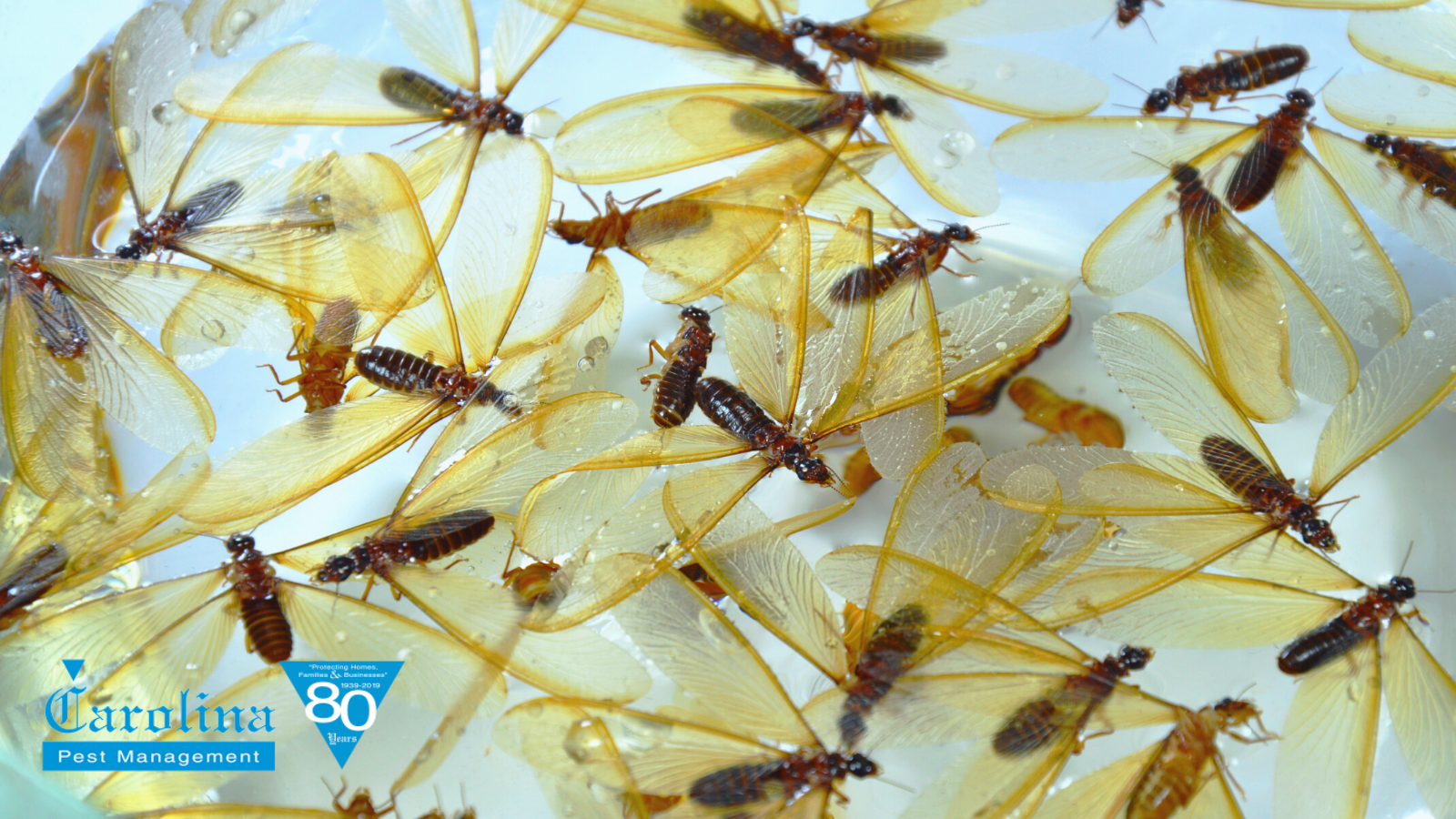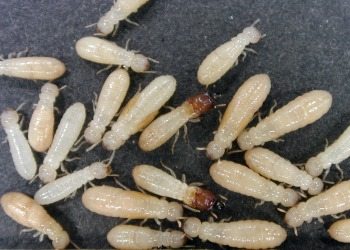How To Tell Winged Termites From Flying Ants
It’s springtime in North Carolina. Flowers are blooming, the air is filled with birdsong, and winged termites—or perhaps winged ants—are swarming a stump in your backyard. The stump is eighty feet from the rear of your house. Should you be worried about a termite problem in your home? That question demands you consider the damage that can be caused by a home termite invasion.
Unwatched and unchecked, termites can make spring a terrible time of year for property owners. According to the U.S. Environmental Protection Agency, termites cause billions of dollars in structural damage each year. Homeowners spend more than two billion dollars annually trying to treat them. But a little knowledge and help from the pros can keep the termite threat from becoming a bigger problem than necessary. And who knows? You might not even have termites; they might be flying ants.
In this article, the pest control techs at Carolina Pest Management share the low-down on winged termites, flying ants, and the importance of knowing the difference between the two.
Differences Between Flying Ants and Winged Termites
It’s very easy to confuse flying ants from winged termites at first glance—especially since both like to live in wooden structures. Both types of insects are similar in size, color, and have the ability to swarm. And, both establish new colonies in the warmer months. Due to their many similarities, homeowners in the North Carolina area are often unsure whether they have witnessed flying ants or termites on their property.
However, despite their visual similarities, flying ants and winged termites are quite different. Their behavior and diet are two huge differences. While both like to inhabit wood structures, termites like to eat wood whereas ants do not. Flying ants prefer to eat cellulose, found in plants, but will gladly eat food debris left by homeowners. Because carpenter ants, or flying ants, don’t eat wood, they pose less structural damage than termites.
How do I tell the difference between winged ants and winged termites?
Winged ants and winged termites look very similar to the untrained eye. However, there are some key differences between the two pests:
- Biting: Carpenter ants, or what many would call a flying ant, can and sometimes do bite humans. Soldier termites, although capable of biting humans, rarely bother.
- Wing Formation: Although both flying ants and winged termites both sport four wings, the ant’s front wings are noticeably larger than the ant’s rear wings. Termite wings are uniform in size.
- Wing to Body Comparison: The wings on flying ants are typically proportionate to their body size. Termite wings run twice as long as the body of the insect.
- Antennae Formation: On the ant, look for elbowed antennae. On the winged termite, look for nearly straight antennas.
- Body Formation: Termite body thickness tends to be uniform whereas ants typically have a thin waist that separates their thorax and abdomen.
The accompanying video from the North Carolina Pest Management Association serves as an excellent primer on how to tell the difference between flying ants and termites.
Pest control for Flying Ants vs. Winged Termites
If you have a swarm of insects at your home, it’s best to contact an experienced pest control specialty that can easily distinguish the difference between flying ants and termites. Because flying ants and winged termites are different types of bugs, they require different types of pest control treatments. A pest control specialist can also set you up with the proper pest control treatment to get rid of the bug infestation completely.
But is the presence of outdoor winged termites evidence of a termite problem in your North Carolina home?
At certain times of the year, swarms of winged adult termites emerge from underground termite colonies. Their goal? Establish new colonies. According to a North Carolina State University article on residential, structural, and community pests:
- If most of the winged termites are spotted outdoors, the associated nest is also likely outdoors.
- If most of the winged termites appear indoors, your Charlotte regional home may well have an inside termite infestation.
So, is it safe to ignore nearby outdoor termite colonies?
Definitely not. What is seen above ground may represent only one of many colonies. Consider the following facts:
- “Swarmers,” or winged adult termites, exist to start new termite colonies.
- Shortly after swarming begins, the wings break off. The termite then seeks security within voids in walls, soil, or other hidden areas.
- That perfect “hidden area” may be your North Carolina home. Unfortunately, termite-related home damage may go on for years before it is noticed by the homeowner.
Structural Pest Control: Getting Help with Your North Carolina Home Termite Problem
If you still have questions or concerns, the pros at Carolina Pest are here to help you decide whether you need ant control or termite control. Carolina Pest Management is licensed, insured, and bonded to provide solutions to local pest infestations. For an immediate response to any suspected Carolina home termite problem, contact the office nearest to your North Carolina home.




